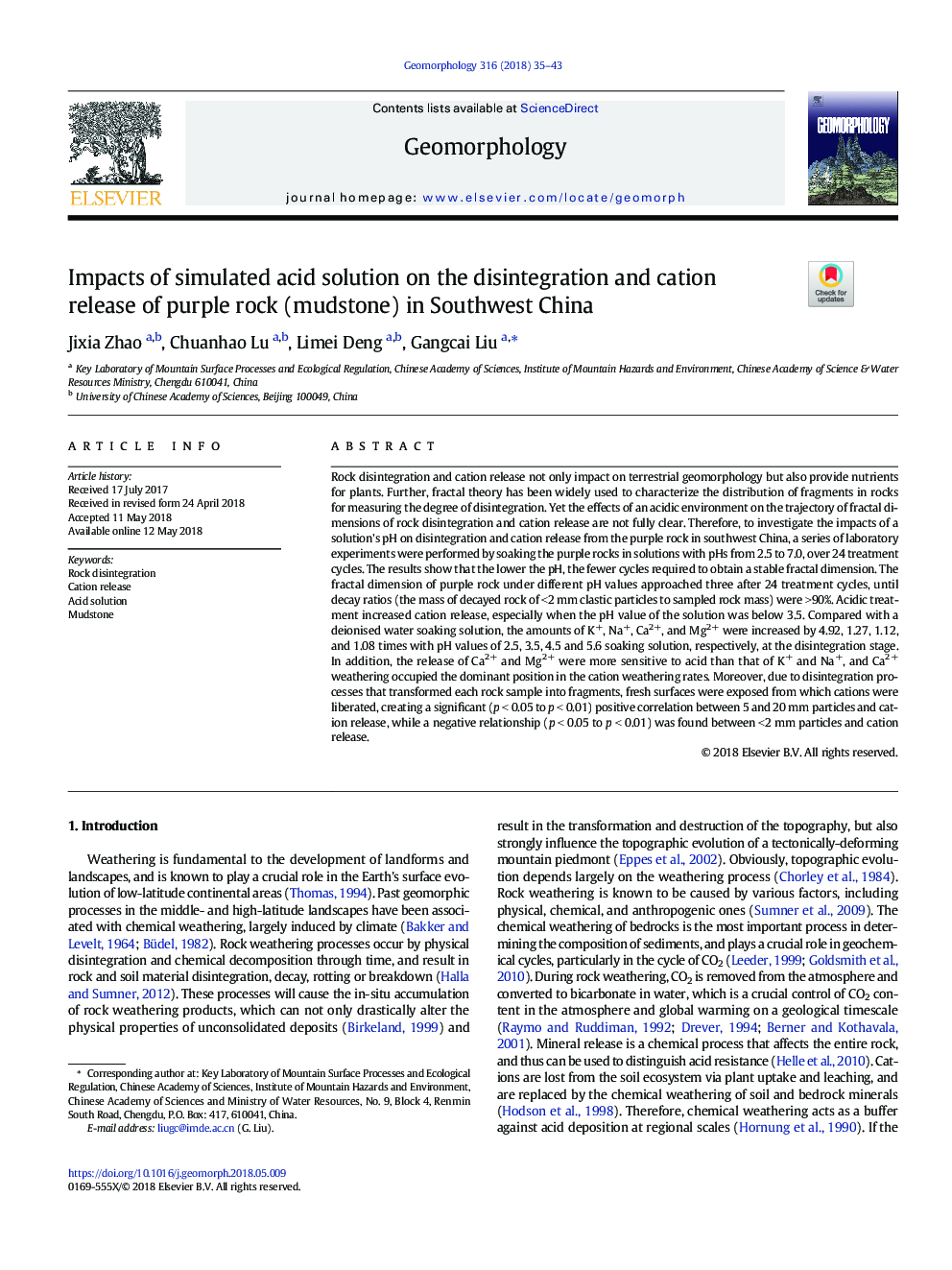| Article ID | Journal | Published Year | Pages | File Type |
|---|---|---|---|---|
| 8907981 | Geomorphology | 2018 | 9 Pages |
Abstract
Rock disintegration and cation release not only impact on terrestrial geomorphology but also provide nutrients for plants. Further, fractal theory has been widely used to characterize the distribution of fragments in rocks for measuring the degree of disintegration. Yet the effects of an acidic environment on the trajectory of fractal dimensions of rock disintegration and cation release are not fully clear. Therefore, to investigate the impacts of a solution's pH on disintegration and cation release from the purple rock in southwest China, a series of laboratory experiments were performed by soaking the purple rocks in solutions with pHs from 2.5 to 7.0, over 24 treatment cycles. The results show that the lower the pH, the fewer cycles required to obtain a stable fractal dimension. The fractal dimension of purple rock under different pH values approached three after 24 treatment cycles, until decay ratios (the mass of decayed rock of <2â¯mm clastic particles to sampled rock mass) were >90%. Acidic treatment increased cation release, especially when the pH value of the solution was below 3.5. Compared with a deionised water soaking solution, the amounts of K+, Na+, Ca2+, and Mg2+ were increased by 4.92, 1.27, 1.12, and 1.08 times with pH values of 2.5, 3.5, 4.5 and 5.6 soaking solution, respectively, at the disintegration stage. In addition, the release of Ca2+ and Mg2+ were more sensitive to acid than that of K+ and Na+, and Ca2+ weathering occupied the dominant position in the cation weathering rates. Moreover, due to disintegration processes that transformed each rock sample into fragments, fresh surfaces were exposed from which cations were liberated, creating a significant (pâ¯<â¯0.05 to pâ¯<â¯0.01) positive correlation between 5 and 20â¯mm particles and cation release, while a negative relationship (pâ¯<â¯0.05 to pâ¯<â¯0.01) was found between <2â¯mm particles and cation release.
Keywords
Related Topics
Physical Sciences and Engineering
Earth and Planetary Sciences
Earth-Surface Processes
Authors
Jixia Zhao, Chuanhao Lu, Limei Deng, Gangcai Liu,
